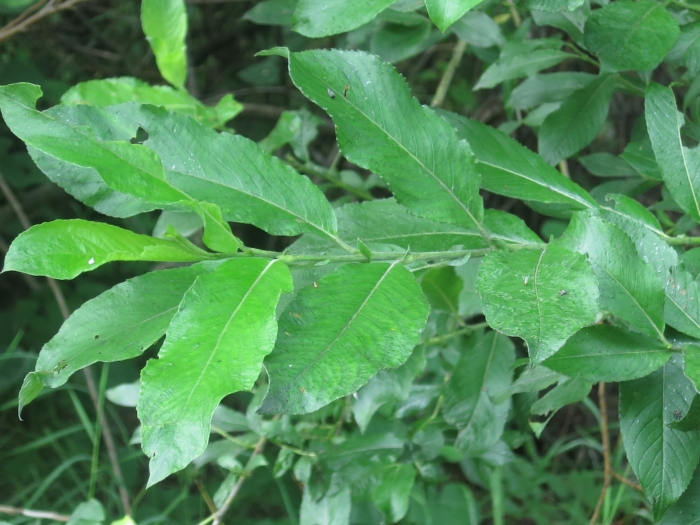Rose-Gold Pussy Willow
(Salix gracilistyla)
Rose-Gold Pussy Willow (Salix gracilistyla)
/
/

Repina Tatyana
CC BY 4.0
Image By:
Repina Tatyana
Recorded By:
Copyright:
CC BY 4.0
Copyright Notice:
Photo by: Repina Tatyana | License Type: CC BY 4.0 | License URL: http://creativecommons.org/licenses/by/4.0/ | Rights Holder: Repina Tatyana | Publisher: iNaturalist | Date Created: 2019-07-17T10:00:49-07:00 |
















Estimated Native Range
Summary
Salix gracilistyla, commonly known as Rose-Gold Pussy Willow, is a deciduous shrub native to wetlands and riverbanks in East Asia, including Japan, Korea, and parts of Russia. It typically grows to a height and width of 5-6 feet (1.5-1.8 meters). This species is particularly noted for its early spring catkins, which are silvery and turn yellow as the pollen emerges, providing an early source of nectar for bees. The catkins are followed by green leaves, and the plant has a rounded, spreading habit. The bark is not particularly notable. Rose-Gold Pussy Willow is valued for its early spring interest and is often used in ornamental gardens for its attractive catkins.
Rose-Gold Pussy Willow thrives in full sun to partial shade and prefers consistently moist, well-drained soil. It is adaptable to a range of soil types, including clay, and can tolerate wet conditions, making it suitable for planting in riparian zones. This shrub is easy to maintain and can be pruned after flowering to encourage vigorous growth and enhance its form. It is resistant to most pests and diseases but can be susceptible to willow scab and blight. It has gained the Royal Horticultural Society’s Award of Garden Merit, indicating its exceptional performance in gardens. In some regions, it may spread aggressively and should be planted with care to prevent unwanted naturalization.CC BY-SA 4.0
Rose-Gold Pussy Willow thrives in full sun to partial shade and prefers consistently moist, well-drained soil. It is adaptable to a range of soil types, including clay, and can tolerate wet conditions, making it suitable for planting in riparian zones. This shrub is easy to maintain and can be pruned after flowering to encourage vigorous growth and enhance its form. It is resistant to most pests and diseases but can be susceptible to willow scab and blight. It has gained the Royal Horticultural Society’s Award of Garden Merit, indicating its exceptional performance in gardens. In some regions, it may spread aggressively and should be planted with care to prevent unwanted naturalization.CC BY-SA 4.0
Plant Description
- Plant Type: Shrub
- Height: 5-6 feet
- Width: 5-6 feet
- Growth Rate: Moderate
- Flower Color: N/A
- Flowering Season: Spring
- Leaf Retention: Deciduous
Growth Requirements
- Sun: Full Sun
- Water: Medium
- Drainage: Medium
Common Uses
Bee Garden, Bird Garden, Butterfly Garden, Deer Resistant, Erosion Control, Hedges, Salt Tolerant, Water Garden
Natural Habitat
Wetlands and riverbanks in East Asia
Other Names
Common Names: 갯버들, Neko-Yanagi, Xi Zhu Liu
Scientific Names: , Salix gracilistyla, Salix gracilistyla f. latifolia, Salix gracilistyloides, Salix gracilistyla var. pendula, Salix gracilistyla var. acuminata, Salix gracilistyla var. adscendens, Salix gracilistyla var. latifolia, Salix gracilistyla var. variegata, Salix thunbergiana var. melanostachys,
GBIF Accepted Name: Salix gracilistyla Miq.